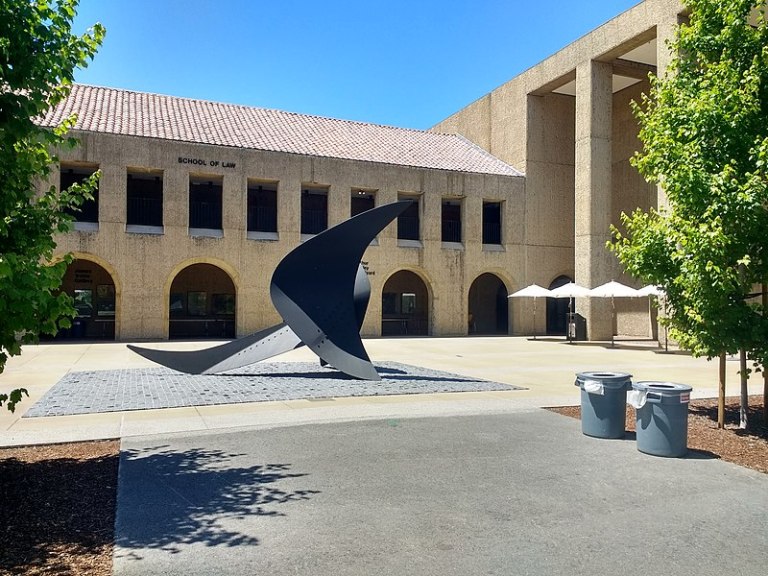After Stanford reaffirmed in-person spring plans, graduate students are reiterating that they disagree with the University’s plans to invite junior and seniors back.
“If it helped Stanford’s educational mission, and in-person classes were more of a possibility, then I’d be more interested in bringing students back,” said Graduate Student Council co-chair and fifth-year theater and performance studies Ph.D. student Kari Barclay. “But my belief is that if the primary purpose is for their social lives, it doesn’t seem like a good reason to bring people back.”
For weeks, graduate students have been vocal in their opposition to Stanford’s plans. Though the sample size was not representative, in a survey conducted by the Undergraduate Senate, as of Feb. 18, 66% of graduate student respondents answered that they either disagreed or strongly disagreed with plans to allow juniors and seniors on campus if medical experts deem the risk acceptable. During the past two weeks, the GSC has worked in conjunction with the Associated Students of Stanford University (ASSU) executive team to urge the University to reconsider its reopening plans.
The majority of those currently on campus are graduate students, who have been allowed on campus throughout this academic year. While most undergraduates have the option of living at home with family, many graduate students live with their partners and children as permanent residents on Stanford’s campus. GSC Counselor K.C. Shah J.D. ’22 said that if the campus population increases, graduate students will be among the most impacted members of the community.
“It’s not the way that we hoped the decision would go,” Shah said. “We are risk averse, because we are the affected population that’s currently on campus.”
Shah said that though he and other law students remain worried, he has grown increasingly optimistic about the safety of a return as vaccine distribution rises and COVID-19 cases fall.
Eva de la Serna, a fourth-year Ph.D. candidate in chemical engineering currently living on campus, said that the “overwhelming opinion” that she is hearing from her peers is that graduate students are not excited for undergrads to return to campus. Serna said that, even with the reduced on-campus population, undergraduate and graduate students alike are partaking in prohibited behavior. As that population grows, Serna said, graduate students fear not only heightened case counts, but also heightened regulations.
“Restrictions have eased a lot since a couple months ago, and I think grad students are very hesitant to let those lax restrictions go because of undergrads coming back to campus, when they see that as something that isn’t essential,” Serna said.
But as a teaching assistant this quarter, Serna said that she has witnessed the hardships undergrads have to go through off campus. Seeing international students in other time zones struggle to take classes at all hours of the day and night has given Serna more perspective. While Serna sympathizes with undergrads, she said she would caution students against returning unless they feel they need to.
She worries that the University will cancel reopening at the last minute, as it has in the past. However, President Marc Tessier-Lavigne and Provost Persis Drell wrote in their most recent announcement that “current modeling suggests that chances are low of needing to make a change in this plan before classes begin.”
“We all saw what the University did in the winter,” Serna said, referencing the cancellation of in-person classes just days before classes were set to begin. “I think it was very cruel, and I’m concerned that they may do it again. Some of these undergrads are going to be traveling, and to be at the whim of the University if they change their mind sounds awful. So if it’s not crucially essential to your life, then maybe it’s just not worth the risk.”
She added that undergraduate students may not understand how difficult life on campus is under the compact, a concern that other graduate students share.
“I’ve been reflecting on how wonderful my experience was on campus for the last four years until it was ended by COVID, and how it is formed around communities,” GSC co-chair Will Paisley ’20 M.A. ’21 said. “This is not the Stanford that they knew what they left. So I worry for the students who do choose to come back, about their ability to have a fulfilling experience.”
Barclay said that he remains worried that the returning undergraduate students will be more likely to engage in unsafe behavior than the current on-campus population. In recent GSC meetings, counselors have contended that upperclassmen, who already know Stanford’s campus well, may try to recreate a “senior spring,” a hope that is far from what the guidelines permit.
In the University’s announcement, Drell and Tessier-Lavigne laid out specifics about what life on campus would look like during the spring quarter, referencing periods of restricted activity and COVID-19 testing requirements. Barclay said that he is heartened that the University listened to student leaders and laid out specific guidelines in the announcement.
Barclay added that he recognizes some graduate students are part of the noncompliance problem. Throughout this academic year, many MBA students within the graduate school of business have repeatedly defied University and state guidelines. He said that, moving forward, the graduate student population will have to set a good example for the returning students.
“We can’t talk about how irresponsible undergraduates are going to be if some of our graduate students are participating in unsafe behavior,” he said.
